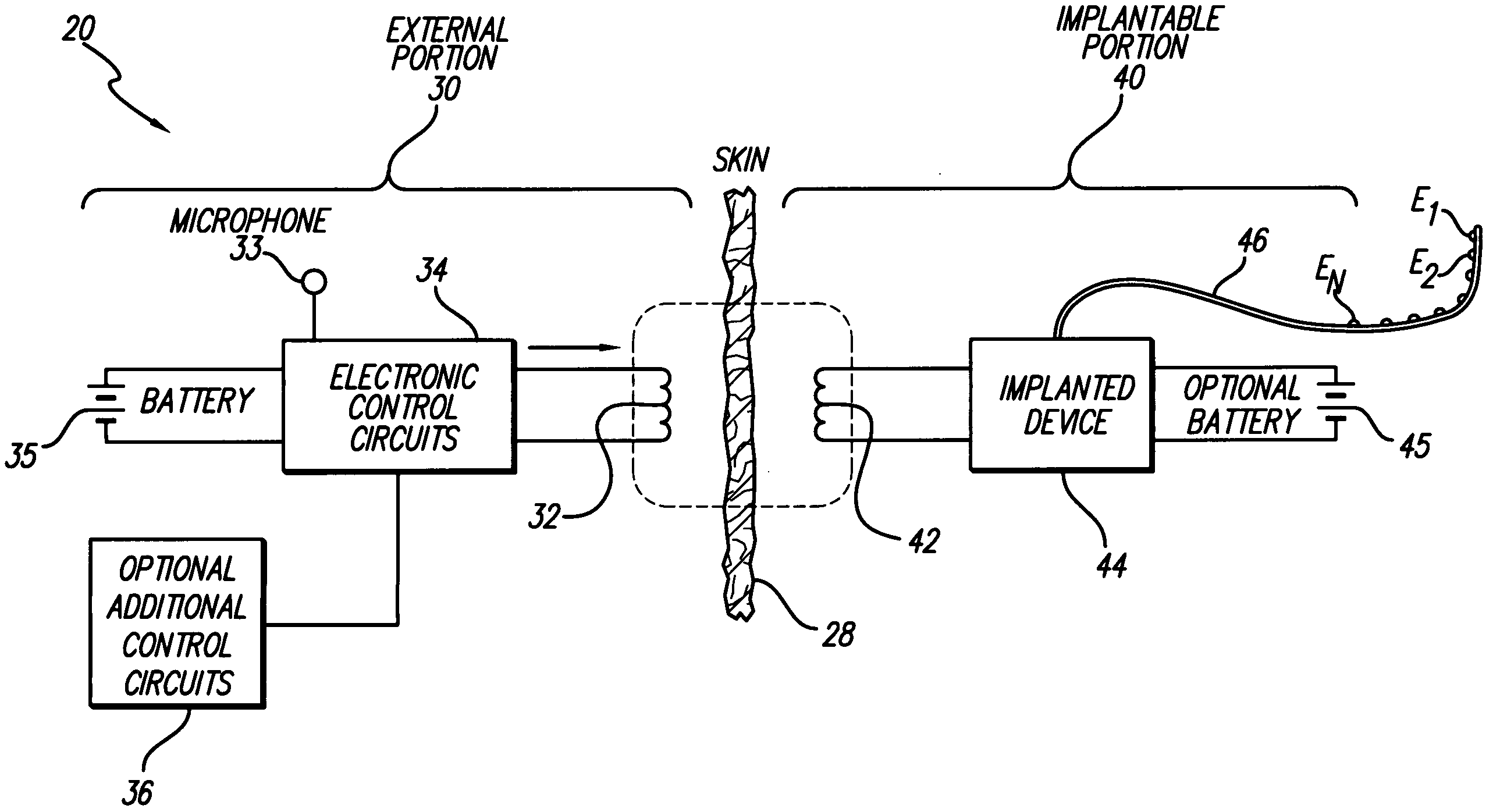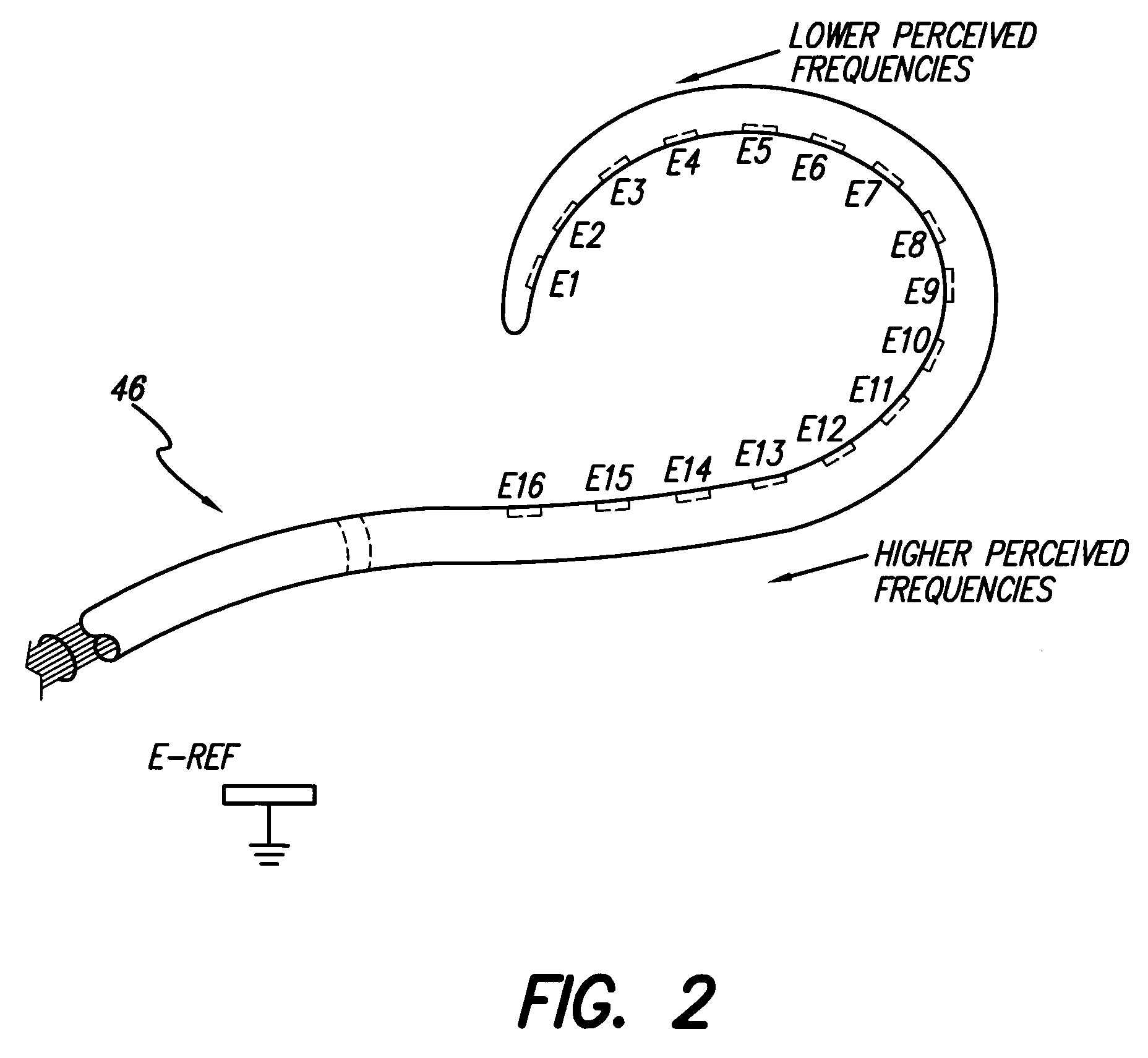Cochlear stimulation device
a cochlear stimulation and device technology, applied in the field of cochlear stimulation systems, can solve the problems of cumbersome and unsightly headpieces, overall cost and reliability of systems, and other problems, to achieve the effect of improving reliability, reducing costs, and improving cosmetics
- Summary
- Abstract
- Description
- Claims
- Application Information
AI Technical Summary
Benefits of technology
Problems solved by technology
Method used
Image
Examples
Embodiment Construction
[0046] The following description is of the best mode presently contemplated for carrying out the invention. This description is not to be taken in a limiting sense, but is made merely for the purpose of describing the general principles of the invention. The scope of the invention should be determined with reference to the claims.
[0047] The following U.S. patents and U.S. Publication teach various features and elements and systems that may be used with a cochlear implant system embodying the present invention. Each of the listed U.S. patents or U.S. Publication is incorporated herein by reference: U.S. Pat. Nos. 5,584,869; 6,181,969; 6,212,431, 6,219,580; 6,272,382; 6,308,101; 6,505,076; and Publication No. 2003 / 0031336 A1.
[0048]FIG. 1 shows an implantable stimulation system 20, e.g., an implantable cochlear stimulation system, according to an example embodiment of the present invention. The system 20 includes an external portion 30 and an implantable portion 40. In this example e...
PUM
 Login to View More
Login to View More Abstract
Description
Claims
Application Information
 Login to View More
Login to View More - R&D
- Intellectual Property
- Life Sciences
- Materials
- Tech Scout
- Unparalleled Data Quality
- Higher Quality Content
- 60% Fewer Hallucinations
Browse by: Latest US Patents, China's latest patents, Technical Efficacy Thesaurus, Application Domain, Technology Topic, Popular Technical Reports.
© 2025 PatSnap. All rights reserved.Legal|Privacy policy|Modern Slavery Act Transparency Statement|Sitemap|About US| Contact US: help@patsnap.com



